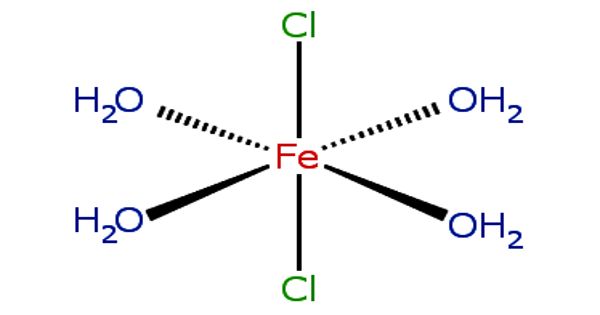What was the source of energy for the first chemical reactions at the dawn of life, and how did they begin? The metabolism of the last universal common ancestor, LUCA, has been reconstructed by scientists. They discovered that nearly all of the chemical steps used by primordial life to assemble the molecular building blocks of cells are energy-releasing reactions. This identified the long-sought source of energy required to propel these reactions forward, which had previously been hidden in plain sight. As long as one essential starting compound is present, the energy required to synthesize the building blocks of life comes from within metabolism itself. The secret ingredient that liberates energy from within at the beginning of life is the cleanest, greenest, newest, and oldest of all energy carriers: hydrogen gas, H2.
Prof. Dr. William Martin’s team at the HHU’s Institute for Molecular Evolution investigates how and where life arose on the early Earth. Their method is both experimental and computational. They conduct chemical experiments in the laboratory to investigate reactions between hydrogen and carbon dioxide, CO2, using catalysts and conditions found in submarine hydrothermal vents. They have developed a type of molecular archaeology at the computer that allows them to uncover the many different traces of primordial life that are preserved in modern cells’ proteins, DNA, and chemical reactions.
We were curious about the source of the energy that propelled primordial metabolism forward. There were no proteins or enzymes to catalyze reactions at the start of metabolic reactions 4 billion years ago because they had not yet evolved. Metabolism had to emerge from reactions that could occur in the environment, possibly with the assistance of inorganic catalysts.
Jessica Wimmer
In their most recent work, they investigated what kind of chemical environment fostered the chemical reactions that gave rise to metabolism and later to LUCA, and where the energy that was required to drive those reactions forward came from. They did this by looking at the information contained within the chemical reactions of life itself, rather than at genes. They discovered 402 metabolic reactions that have remained virtually unchanged since the beginning of life approximately 4 billion years ago. These reactions were present in LUCA because they are shared by all cells. They shed light on how primitive life dealt with energy in metabolism and where it obtained the energy required to keep life’s chemical reactions going.
Jessica Wimmer, a Ph.D. student at the institute and the paper’s lead author, was especially interested in the energy balance of LUCA’s metabolic reactions because all life requires energy. She created a catalog of the 402 reactions that the simplest and oldest modern cells, bacteria and archaea, use to build the building blocks of life: the 20 amino acids, DNA and RNA bases, and the 18 vitamins (cofactors) that are required for metabolism. These compounds are synthesized in the most primitive of modern cells, as well as in Wimmer’s computer analyses, from simple molecules that are present in the modern environment and were also present in hydrothermal vents on the early Earth: hydrogen (H2), carbon dioxide (CO2), and ammonia (NH3). The end result was the LUCA metabolic network.

When asked about the motivation behind the new study’s central question, Jessica Wimmer says: “We were curious about the source of the energy that propelled primordial metabolism forward. There were no proteins or enzymes to catalyze reactions at the start of metabolic reactions 4 billion years ago because they had not yet evolved. Metabolism had to emerge from reactions that could occur in the environment, possibly with the assistance of inorganic catalysts. However, whether or not catalysts are used, the reactions must release energy in order to proceed. What was the source of that energy? In the literature, there have been numerous suggestions for potential sources of metabolic energy. However, no one has ever investigated the reactions of metabolism itself.” To identify energy sources in metabolic reactions, the researchers calculated the amount of free energy, also known as Gibbs energy, released or consumed in each reaction.
As a result, LUCA’s metabolism did not require any external energy sources such as UV light, meteorite impacts, volcanic eruptions, or radioactivity. On the contrary, in an environment resembling many modern submarine hydrothermal vents, the energy required for metabolic reactions to proceed comes from within metabolism itself. To put it another way, almost all of LUCA’s metabolic reactions generate energy on their own: the energy for life comes from life itself. “That is exciting,” says Martin, the study’s senior author, “because the 400 interconnected reactions of central metabolism, which appear so hopelessly complex at first encounter, suddenly reveal a natural tendency to unfold all by themselves under the right conditions.”
To reach that conclusion, the team had to first investigate the energetics of the 402 reactions using computer programs that simulate various environmental conditions in order to distinguish between energetically favorable and unfavorable combinations. This is significant because whether or not a reaction releases energy is frequently determined by environmental conditions. They looked at pH levels ranging from 1 (acidic) to 14 (alkaline), temperatures ranging from 25 to 100 °C, and different ratios of reactants to products. They paid close attention to hydrogen’s energetic role. “Nothing happens without hydrogen,” Wimmer says, “because hydrogen is required to get carbon from CO2 incorporated into metabolism in the first place.”
The optimal energetic conditions are an alkaline pH range of around pH 9 and a temperature of around 80 °C, with hydrogen required for CO2 fixation. Martin explains how this result fits into the larger picture: “This is almost exactly what we see at Lost City, a Mid-Atlantic H2-producing hydrothermal field. In such a setting, approximately 95-97 percent of LUCA’s metabolic reactions could occur spontaneously, that is, without the need for any other source of energy. H2 is chemical sunlight in the abyssal darkness of hydrothermal systems. Modern energy research takes advantage of the same properties of hydrogen that life does. It’s just that life has four billion years of experience with hydrogen technology, whereas we are only getting started.”
Jessica Wimmer continues, saying: “In terms of energy at the origin of life, we can say that pure chemical energy suffices. We don’t need sunlight, meteorites, or UV light; all we need is H2 and CO2, along with some ammonia and salts. Because the chemical reactions in our biosynthetic network are extremely conserved, we can gain some interesting insights into the reactions that gave rise to LUCA, despite the fact that it lived four billion years ago.”
















